Advertisement
Grab your lab coat. Let's get started
Welcome!
Welcome!
Create an account below to get 6 C&EN articles per month, receive newsletters and more - all free.
It seems this is your first time logging in online. Please enter the following information to continue.
As an ACS member you automatically get access to this site. All we need is few more details to create your reading experience.
Not you? Sign in with a different account.
Not you? Sign in with a different account.
ERROR 1
ERROR 1
ERROR 2
ERROR 2
ERROR 2
ERROR 2
ERROR 2
Password and Confirm password must match.
If you have an ACS member number, please enter it here so we can link this account to your membership. (optional)
ERROR 2
ACS values your privacy. By submitting your information, you are gaining access to C&EN and subscribing to our weekly newsletter. We use the information you provide to make your reading experience better, and we will never sell your data to third party members.
Biological Chemistry
Pesticides Trend All-Natural
ACS Meeting News: Chemists discuss the growing role of natural products in developing new pesticides
by Stephen K. Ritter
September 3, 2012
| A version of this story appeared in
Volume 90, Issue 36
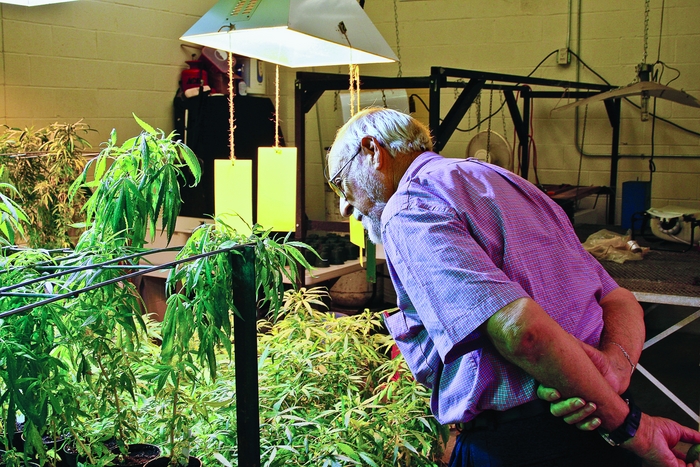
\
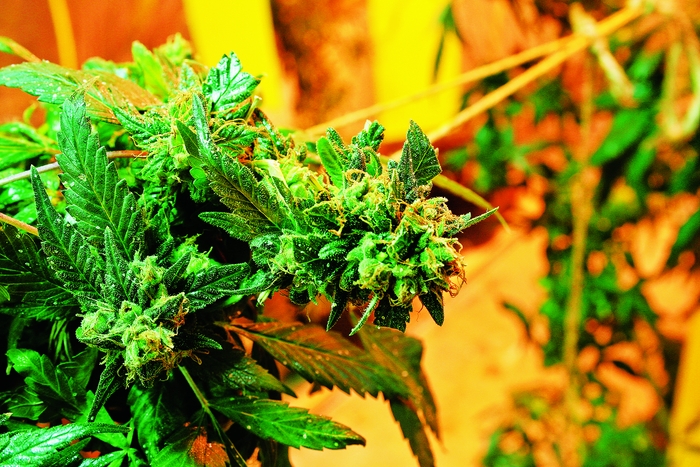
\
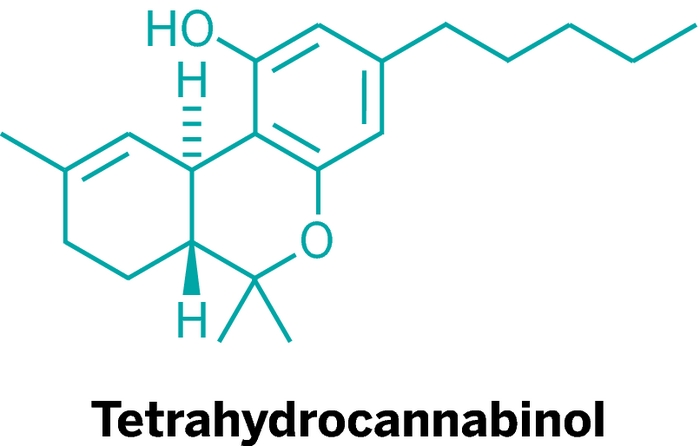
\
Hank Cutler examines marijuana plants being grown in his son Stephen Cutler’s lab at the University of Mississippi. Stephen is studying the therapeutic and agrochemical effects of cannabinoid natural products, such as tetrahydrocannabinol. He says the beauty of flowering marijuana plants that he studies, shown close-up (above), “is often underappreciated.”
“All the pests that out of Earth arise, the Earth itself the antidote supplies.” This line, from a poem attributed to Lithica circa 400 B.C., is a prescription that is increasingly guiding 21st-century scientists who develop fungicides, insecticides, and herbicides for crop protection.
At the recent American Chemical Society national meeting in Philadelphia, chemists discussed the trend of using natural products to replace synthetic chemicals in pest management. In a symposium sponsored by the Division of Agrochemicals, the attendees shared a sense of excitement in knowing that a plant, soil bacterium, or fungus could supply a molecular solution to thwart a destructive insect or pathogenic microbe threatening to ruin a good harvest.
“The chemical templates offered by nature are often unique, and even the most imaginative and technically capable synthetic chemist lacks the structural vision these molecules provide,” observed Stephen J. Cutler, a natural products chemist at the University of Mississippi. “In essence, nature seems to make with great facility those compounds that the chemist makes with great difficulty, if at all.”
Before chemists came along, plants evolved a multitude of biomolecular mechanisms for self-protection. As agriculture developed, people began through observation and trial and error to tease out these natural solutions. The list of pheromones, proteins, alkaloids, essential oils, and fatty acids used for pest management has become extensive.
Advances in organic synthesis in the 20th century shifted pesticide development toward synthetic compounds. But the rise of biotechnology, computational chemistry, and advanced analytical methods in the past two decades has pushed pesticide development back toward an all-natural approach.
In an attempt to put numbers on natural product pesticide use, Department of Agriculture scientists Charles L. Cantrell, Franck E. Dayan, and Stephen O. Duke analyzed new active ingredient registrations filed with the Environmental Protection Agency. Cantrell presented the findings in Philadelphia (J. Nat. Prod., DOI: 10.1021/np300024u).
Cantrell and his colleagues placed the pesticide registrations into four groups: synthetic compounds, semisynthetic compounds based on a natural product, peptides or proteins isolated from a plant or microbe, and unmodified natural product compounds or crude extracts.
“Nearly 70% of the 277 pesticides registered during the period 1997 to 2010 had their basis in a natural product,” Cantrell said. “But those results are not really surprising.”
Regulatory pressure to eliminate the most toxic, older synthetic pesticides to reduce environmental impact is helping drive development of natural product pesticides, Cantrell noted. Other factors include farmers better appreciating the efficacy of natural products to improve plant health, increase yields, and combat pesticide resistance, he said, as well as consumer demand for foods that have low pesticide residues.
Cantrell’s study covered the period following enactment of the Food Quality Protection Act of 1996. That legislation directed EPA to uphold stricter safety standards and revamp its approach to reporting pesticide data, Cantrell explained. The law has curtailed the number of new synthetic pesticides being registered, he said, and provided an avenue to quicker registration of natural-product-based pesticides.
For example, the law enabled Dow AgroSciences to cut several years off the registration process for its spinetoram natural product insecticide. Spinetoram was inspired by Dow AgroSciences’ spinosad, an insect and mite pesticide that draws its active ingredients from tetracyclic compounds called spinosyns produced by the soil bacterium Saccharopolyspora spinosa. Spinetoram is a mixture of synthetically modified spinosyns from the same bacterium. Compared with spinosad, it offers control of a broader range of pests at generally lower application rates.
The pathway from spinosad to commercial spinetoram required close coordination of the company’s technical, business, and marketing groups and efficient interaction with EPA, Dow AgroSciences scientists reported in Philadelphia. The effort garnered the firm the 2012 ACS Award for Team Innovation (C&EN, Jan. 16, page 41).
Cantrell’s pesticide registration analysis didn’t include one of the most widespread examples of natural-product-inspired pest-management strategies, namely plant-incorporated protectants from genetically modified plants. A familiar example is Bacillus thuringiensis, known as Bt, a soil bacterium that produces insecticidal proteins. Bt genes have been inserted into crops to produce the proteins.
The analysis also did not include plants genetically modified to be resistant to the effects of pesticides. For example, among the most widely grown crops in the world are corn, soybeans, and cotton genetically engineered to be resistant to the synthetic herbicide glyphosate. The success of glyphosate-resistant crops, coupled with increased development costs, has actually stymied herbicide development and new pesticide registrations, Cantrell noted. But now that some weeds are showing resistance to glyphosate, natural products chemists are scrambling to bring herbicides with new modes of action to the marketplace (C&EN, May 21, page 20).
“Our analysis gives us a good feel for the impact natural products have had on the discovery and development of new pesticides,” Cantrell told C&EN. “It doesn’t necessarily say natural product pesticides are safer or work better—some natural products in their natural form can be quite toxic. But they tend to degrade quicker in the environment than traditional synthetic organophosphate and halogenated pesticides, are more selective against the target, and can be used at lower application rates.”

One example that has those attributes is biopesticide firm AgraQuest’s flagship product, Serenade, the first broad-spectrum biobased fungicide. Serenade’s antifungal properties stem from the activity of a suite of lipopeptides produced by a patented strain of Bacillus subtilis discovered in a soil sample from a California orchard. The lipopeptides form micelles that destroy fungal cells and spores to prevent reproduction. Serenade is now being used on commercial fruit, nut, and vegetable crops and in home and garden applications.
Another example is Marrone Bio Innovations’ biofungicide Regalia, an extract of the giant knotweed plant, so named for the jointed swollen nodes on its long stem. Its active ingredient includes two anthraquinones, emodin and physcion. These chemicals induce plants to boost production of proteins and phytochemicals that are active against bacterial and fungal invaders, such as the Botrytis fungi that cause fuzzy gray mold on fruits and vegetables.
Finding and developing these natural product pesticides is not simple, explained Ratnakar N. Asolkar, a senior scientist at Marrone. Scientists at the company have analyzed some 17,000 microorganisms, Asolkar noted, with 39% of them classified as actinomycetes bacteria, a group of microbes that is a source of many useful natural products, including spinosyns. An additional 37% are other bacteria, and 24% are fungi.
Once individual microbes or active ingredients from extracts have been isolated, researchers screen them for their activity as fungicides, insecticides, herbicides, algicides, and nematicides, Asolkar said. For promising candidates, next come optimizing production and the process chemistry to isolate pure compounds, formulation to maximize efficacy, toxicity studies, field tests, and finally a decision on trying to go commercial. So far, the company has five products on the market.
The future of natural product research seems destined to remain wide open, according to Mississippi’s Cutler. Cutler was inspired to study natural products by his father, the late Horace G. (Hank) Cutler, a preeminent natural products chemist who died last year. During the symposium, which was held as a tribute to his father, the younger Cutler provided a retrospective tour of his father’s 57-year career in industry and with USDA’s Agricultural Research Service.
Cutler also described his own efforts to study how to single out the pharmacological effects of natural products. Staying in tune with his father’s legacy, he is keeping an eye out for potential agrochemical bioactivity as well.
“Our goal is to mine compounds to discover novel therapeutic agents that block or enhance the activity of cannabinoid and opioid receptors in the endocannabinoid system, which influences appetite, pain sensation, mood, and memory,” Cutler explained. Some possibilities include compounds that could stimulate the immune system to help treat conditions such as multiple sclerosis, obesity, and cancer.
“Our research is starting to show that it’s possible to isolate the desirable therapeutic effects seen with natural products found in marijuana from the abuse potential of the psychotropic effects—that is, the high that recreational users are after,” Cutler told C&EN. “We are also discovering a treasure trove of natural products obtained from other plants and fungi that act on cannabinoid receptors and are devoid of psychotropic effects.”
These findings are hinting that in some cases the same compound could be used as an agrochemical or as a pharmaceutical. For example, in Philadelphia, Francisco A. Macías of the University of Cádiz, in Spain, reported on the properties of guaianolides, a family of sesquiterpenes found in asters and sunflowers. From bioassays, Macías and coworkers have found that some of the compounds act as plant growth inhibitors and might be useful as herbicides, and the same compounds can kill human ovarian cancer cells. Cutler and Macías are discussing how they might collaborate on the work.
“A flurry of activity stimulated by the advent of combinatorial chemistry two decades ago has many companies screening natural products as lead compounds,” entomologist Pamela G. Marrone told C&EN. “But we have only scratched the surface,” she said.
Marrone, a pioneer in the biopesticide industry, founded AgraQuest in 1995; the firm was recently bought by Bayer. She started Marrone Bio Innovations in 2006 and serves as chief executive officer.
In Marrone’s mind, the industry is still in its infancy. “We have a huge opportunity to continue to find exciting new natural products that can be used as microbial biopesticides, fermented natural products, or synthetic leads,” she said.



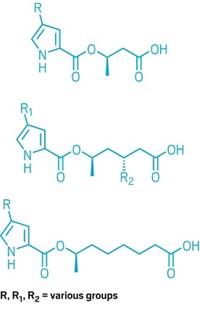
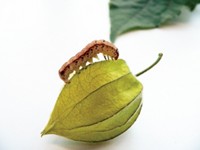

Join the conversation
Contact the reporter
Submit a Letter to the Editor for publication
Engage with us on Twitter